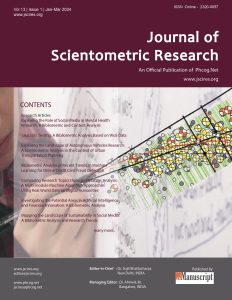
The Journal of Scientometric Research (J. Scientometric Res.) is the official journal of Phcog.Net. The open-access journal publishes peer-reviewed articles after carefully selecting them through a double-blind peer-review process. It encourages the development of scientometric research (in its broadest sense) as well as the use of scientometric data as ‘object of investigation’ or scientometric analysis in innovation and STS studies. It also reaches out to scholars of STS, sociology, economics, and related fields.
JCR IF in 2023 is 0.8
CiteScore in 2023 is 1.7
Frequency: Rapid at a time publication – Triannual (3 issues/year). Special issues are also published on contemporary areas from time-to-time.
Contents:

This research aimed to investigate the global development of social media and mental health research and analyze publishing trends within the esteemed Scopus and Web of Science (WoS) databases, shedding light on the growing significance of this interdisciplinary field for understanding the interplay between digital technologies and mental well-being. Leveraging ScientoPy, the study analyzed factors such as publication numbers, primary research themes, top countries, subject areas, frequently used author keywords, preferred sources, and institutional data. Visualization maps and content analysis were created using VOSviewer and Biblioshiny, respectively. The analysis encompassed 3,119 entries from the Scopus and WoS databases, revealing a notable upward trajectory in social media and mental health research. Psychology emerged as the most prominent subject area, with the United States being the most productive country. Keywords such as “social media,” “depression,” and “mental health” saw a significant surge in popularity during 2021 and 2022. This study offers readers and future researchers a comprehensive global perspective on key topics in social media and mental health, facilitating the structuring of data for the development of robust theories and practices in this domain.

Usability is a qualitative characteristic that evaluates the ease of use of user interfaces. This study aims to conduct a systematic bibliometric analysis of usability testing and to understand the research context and trends in this field. A total of 5273 scientific publications from the Web of Science core collection were included in the study. Performance analysis, scientific mapping, and visualization were done using the RStudio package and the VOSviewer software tool. The results show that the interest in the area of usability testing has significantly increased, especially from 1991 to 2022. The United States has the highest number of publications, citations, co-citations, and ratios. Toronto University was top in terms of institutional contributions. The JMIR mHealth and uHealth led in the number of publications and citations. Khajouei has the highest number of publications, but Jaspers has received the most citations on usability testing. With 10264 total link strength, Nielsen has the most potent co-citation papers. This study reveals the latest research trends and hotspots and the current state of international collaboration in usability testing research, to indicate the most influential research channels. These findings include; the prominent countries, institutions, journals, original articles, and authors. To the best of the author’s knowledge, this study is the first of its kind to conduct the bibliometric analysis on usability testing. These findings can be useful in shaping the direction of future studies on usability testing, and the understanding how usability testing.

Autonomous Vehicles (AVs) have the potential to (re)shape the urban transportation network drastically. The significant investment by the automotive industry and leading technology companies in AVs has resulted in a substantial surge in the number of published documents in this domain. Therefore, this study aims to analyze the current state and trajectory of AVs research by conducting a comprehensive review of the available literature. The study employs scientometric methods to examine the scientific landscape of AVs and assess the position of Urban Transportation Planning (UTP) within this context. The analysis encompasses both a macro-level perspective and a meso-level focus on UTP, utilizing datasets of journal articles published up to January 2023. The study addresses various questions such as identifying the main research trends, evaluating the impact and influence of countries and sources, determining the collaboration level among different countries, and assessing the maturity of AVs domain in the field of UTP. To accomplish this, the study analyzes the conceptual, intellectual, and social landscapes of AVs from both a holistic and macro-level perspective, as well as from the UTP perspective in a meso-level. The findings highlight a significant disparity between attention on AVs’ UTP aspect and their technical advancement, emphasizing the need for more comprehensive research to fully comprehend the implications of AVs deployment from the UTP perspective. The comprehensive understanding of the literature gained from this study will enable scholars to identify research gaps, necessities, and potential avenues for future research.

Online credit card fraud (OCCF) is the malicious act of using credit card details belonging to another person to complete fraudulent transactions over the Internet. Naturally, masses of researchers have engaged in the imperative search for effective solutions across a wide range of disciplines. The result is a rich tapestry of methodologies, models, frameworks, and inventions exhibiting dramatic spread and growth. However, this also results in an unorganized research domain. In this state, a bibliometric analysis is a useful technique for establishing a reconciled snapshot of the OCCF research domain. This paper has particular interest in determining the intellectual structure of the knowledge of machine learning, deep learning, and ensemble learning models for early detection of OCCF. This bibliometric analysis is conducted using 524 publications between 2013 and 2022 extracted from the SCOPUS core collection database. Microsoft Excel, VOSViewer, and Biblioshiny software tools were used for data analysis. The findings indicate that ensemble learning models are trending and the three most authoritative authors have been exposed in this study. There is a sharp rise in global publications annually and India has the most publications with the most impactful authors. Five broad clusters of knowledge are imbalanced data, anomaly detection, machine learning, decision trees, and ensemble learning. Intellectual collaboration across regions is strong amongst Asia, Europe, and North America with weak associations between Africa and South America. This is the first bibliometric analysis in the domain of OCCF detection to the best of the author’s ability. The findings significantly contribute to the application of OCCF detection through the creation of intellectual patterns in existing literature. The results bring about synthesis within a domain of research that is currently disorganized. This in turn helps researchers to identify research gaps, and areas for further research and formulate a curriculum.

The present study extract, map and compare the lexical and semantic similarity of terms from author-provided keywords with machine extracted terms and topics from titles and abstracts of an inter-disciplinary field like ‘digital humanities’. Author-provided terms (keywords) were first extracted and mapped through visualization software like Gephi and then these extracted terms were compared with terms extracted from title and abstract of the research articles through NLP based statistical modules. Also, the interdisciplinary of significant topics were measured through the Brillouin index. A set of 7483 articles downloaded from Scopus database on the domain of digital humanities and its associated fields were used for the purpose. We observed the researches on digital humanities are spread over a considerable number of concepts like ‘Industry 4.0’, ‘topic modelling, ‘open science’. Further, the machine algorithm-based extraction compared and identified a larger lexical similarity between these author-provided keywords and title-extracted keywords, rather than abstract-extracted keywords. Jaccard similarity of all author-keywords with machine extracted title keywords came 0.83 and SBERT BiEncoder_score was 0.7374. The top research areas extracted from titles, through unsupervised approach of term extraction resulted in topics like digital humanities approach, digital humanities visualization, indicating a strong connection to the discipline of digital humanities. The average interdisciplinarity index of top significant topics came between 1.217 and 1.284, with the highest index value for ‘computational digital humanities’. As this study is based on real-world data, it is highly useful to understand how far machine algorithm-based text extraction can be helpful for information retrieval process.

In recent years, there has been widespread interest in the applications of Artificial Intelligence (AI) techniques to the financial sector and in the development of new financial products and services. AI methods are widely regarded as the most important methods in the emerging market for providing not only cutting-edge financial services, but also an innovative approach to business process automation, a solution to the challenges of reducing service costs associated with managing low-income and rural customers and a method of identifying and evaluating the creditworthiness of those customers. No clear reviews are identified in the areas of AI and its contribution to Financial Innovations (FI) research in finance. To address the above gap, the present study provides a systematic literature review and bibliometric view of AI and FI research in finance. Co-citation, co-occurrence and bibliographic coupling analysis techniques are being used to make inferences about the structure of AI and FI research in finance from 1987 to 2022. The study used 237 filtered research articles from the Scopus database and processed through VOS-Viewer and Biblioshiny through “R” to justify study objectives. Through bibliometric analysis, this study unveils influential authors, journals and institutions, emphasizing top-cited research articles and unveiling six emerging thematic clusters. The novelty lies in the identification of prominent keywords linked to AI and financial innovation research, accompanied by a comprehensive analysis of globally and locally cited articles. Employing an analytical approach, the study identifies research gaps to contribute to the existing body of knowledge.

In line with the development of behavioural finance in developed markets, research on investor sentiment has increased in recent years. The primary purpose of this study is to investigate the development of research on investor sentiment in emerging and frontier markets. This study will help researchers understand the interest of authors and journals in finding appropriate coordinators and future research topics in this research field. Using bibliometric analysis, we assessed 508 documents between 1999 and 2020 located in the Scopus database. The results show that publications on investor sentiment in emerging and frontier markets grew steadily in the 21st century. “Herding behaviour” is the most prominent research theme in this area. In the following years, return predictability, principal component analysis, investor attention, and economic policy uncertainty with asymmetric effects are the dominant topics that have reshaped research on investor sentiment in emerging and frontier markets.

In this article we analyze the cited references in 1.38 million papers by Russian (co-)authors indexed in the Web of Science database until May 2022. Similarly, to the established processes in the so-called Reference Publication Year Spectroscopy (RPYS), we study the distribution of the references across the cited years and seek to identify the peak years with the publications that attracted the most attention of Russian scholars. In this way, the historical roots of Russian science may be traced and we take a closer look at these most influential works. In addition, we investigate the evolution of the mean age of references and of their average number per paper over time and inspect the most frequently cited sources. The results show that the average number of references in Russian papers has been steadily increasing, but the mean age of references has been declining in the most recent years. Also, the foundations of Russian science seem to be physics of particles and electrochemistry and have recently become based more internationally than in the past. This study is the first of its kind and may help better understand the character of Russian research.

In university hospitals, clinical care, teaching and research are the pillars of their missions. Scientometrics play a key role in the analysis of scientific productivity of researchers, laboratories or countries. However, there are no published articles about bibliometric studies of the scientific production of healthcare institutions in Latin America. To carry out a scientometric analysis of leading clinics and hospitals from five Latin American countries. We focused on five Latin American countries with the largest scientific production: Argentina, Brazil, Chile, Colombia and Mexico. We examined available information for international publications, citations, registered clinical trials, networks of collaborations and patent applications. The institutions with the highest numbers of published articles are: Hospital de Clínicas de Porto Alegre (Brazil), Instituto Nacional de Ciencias Médicas y Nutrición Salvador Zubirán (Mexico), Instituto Nacional De Cardiología Ignacio Chávez (Mexico) and Hospital Italiano de Buenos Aires (Argentina). Highly cited articles, networks of collaborations and patents applications were also identified. Scientometric analysis of health research around the globe has been quite helpful, in terms of identification of priorities for funding and support. The higher scientific productivity for some of these Latin American institutions might be explained partially by their higher levels of collaborations with colleagues in institutions in high-income countries, which usually have larger funding. We provide several recommendations for strengthening clinical research in this world region.

Mapping of research has become important across the world and any new technology requires a new institutional framework for mapping appropriate outcomes of research. It involves analyzing linkages between various actors, stakeholders, agencies, and institutions to map potential research domains. Over the years, Biotechnology Applied Microbiology has emerged as a niche area, and this sector is recognized as the key driver for economic growth and development. Biotechnology has emerged as a promising area of research in selected African countries but requires expanding its S&T base. To enhance S&T-based and capacity building Africa has initiated to expand its collaborative efforts with other countries including Europe, Asia, the US, the Middle East, and Africa with promising results in different areas like nanotechnology, biotechnology, agriculture, pharmaceuticals, etc. Biotechnology is one of the emerging areas and African biotechnology has the potential to transform the economy. Therefore, this paper presents an analysis of the emerging pattern of research areas in selected African countries and in particular biotechnology research activities in Africa. More than 56000 research articles were analyzed, using SPSS software, indicates that R&D collaboration and national as well as international networks could be helpful in enhancing publication output and research competency in the field of biotechnology research in Africa.
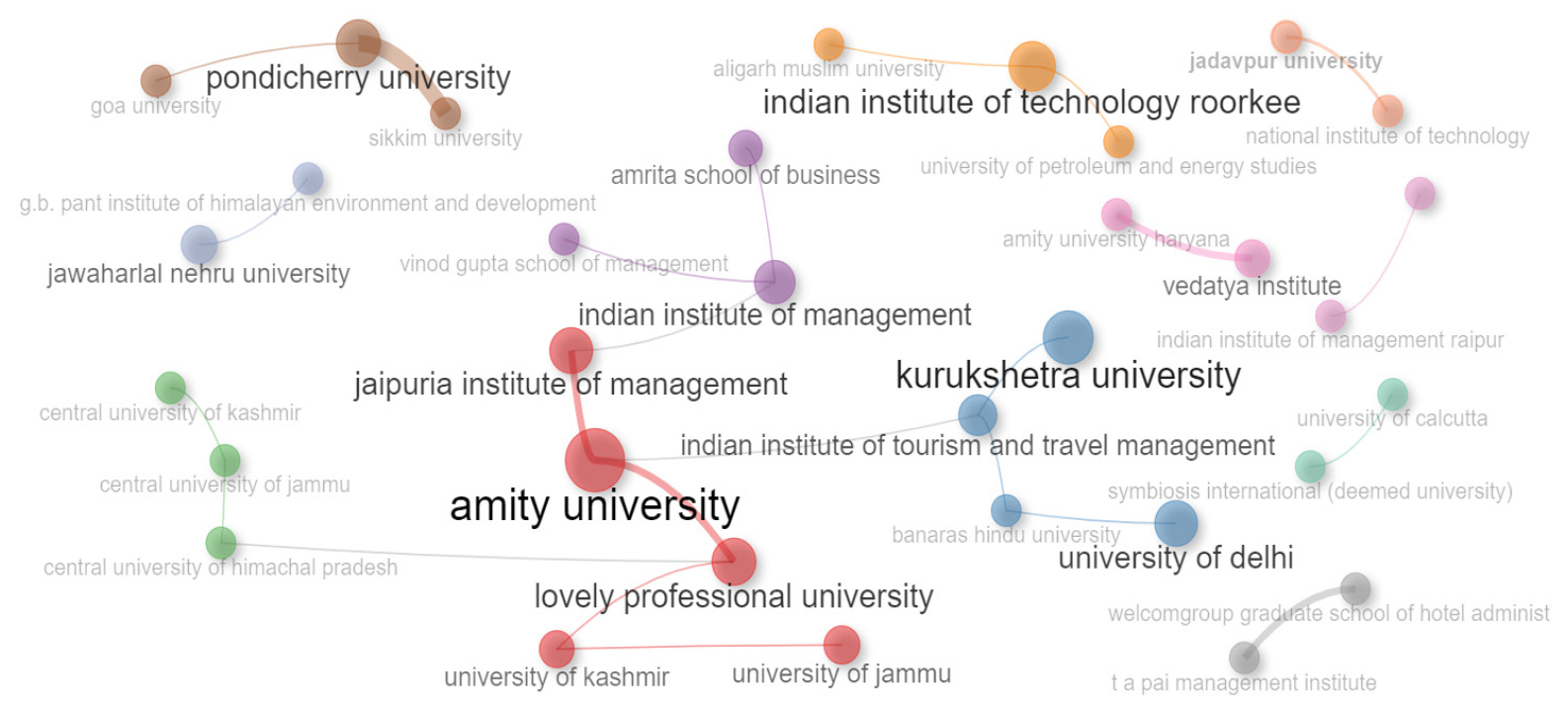
This paper is the first of its kind to provide a comprehensive overview of tourism and hospitality research in the South Asia sub-region from the year 1992 to 2021. To achieve this, 1003 research articles from the Scopus database were selected and extensively studied using various bibliometric parameters. The most cited article, contributing countries, most influential institutions, most prolific journals and the most influential authors in tourism and hospitality research in the sub-region are all discussed in this work. It was observed that there is a wide gap in terms of publications between India and the remaining South Asian countries. Findings from the study show no remarkable degree of centralization in the network of institutional collaboration among institutes in the sub-region. The study established that the current areas of research in the field of tourism and hospitality, which provide a theoretical foundation, include tourism ethics, hotels, hospitality services, Kerala, India and the internet. The findings of the paper will assist scholars and researchers in identifying research topics and themes with the greatest potential to advance tourism and hospitality research. The study’s implications and limitations are presented and discussed.
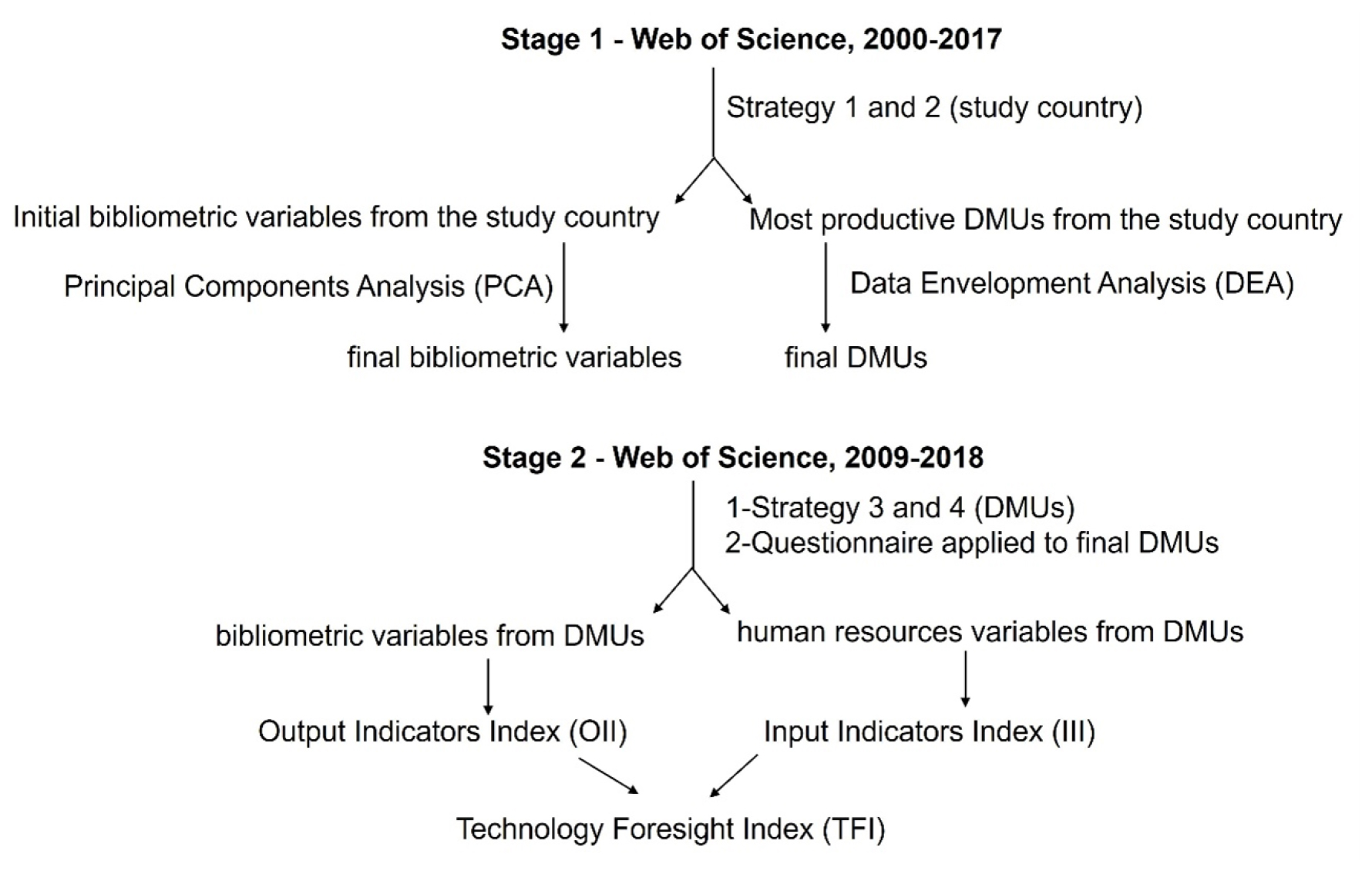
Foresight methods have been used by governments to reduce the margin of error in decision-making, but there is no golden rule for foresight activity; rather, several methods are combined to support decision-making. This article proposes an index number to support Technology Foresight in the field of Pharmacology/Pharmacy. The index number was formed by the relationship between bibliometric and human resources variables. First, Principal Components Analysis was used to reduce the initial bibliometric variables proposed by literature. Finally, Data Envelopment Analysis was used to calculate the number of Decision-Making Units (DMU), which are the most prolific institutions in the study country. The study examined 12 DMUs with 2,744 human resources (100% with academic degree) and 1,515 with research category (55.2%) from these, 217 granted patents (17.1% cited patents) and 1,017 papers (92.3% cited papers) were obtained. A simple but robust index was obtained to support decision-making in Technology Foresight. The results obtained from DMUs affect the Technology Foresight Index due to some institutions with low levels of scientific and technological activity and others with many highly qualified personnel. Technology foresight should be performed periodically by governments to reduce uncertainty in the innovation process and to develop highly competitive technologies. In this sense, this index is reliable for decision-making in the field of pharmacology/ pharmaceuticals. It proposes a novel index relating bibliometric variables (output indicator) and human resources variables (input indicator) to foresee the scientific and technological development in the field of Pharmacology/Pharmacy at the national level. In addition, this study includes variables representing scientific (paper) and technological (patent) activity, as well as the impact of both at the international level.
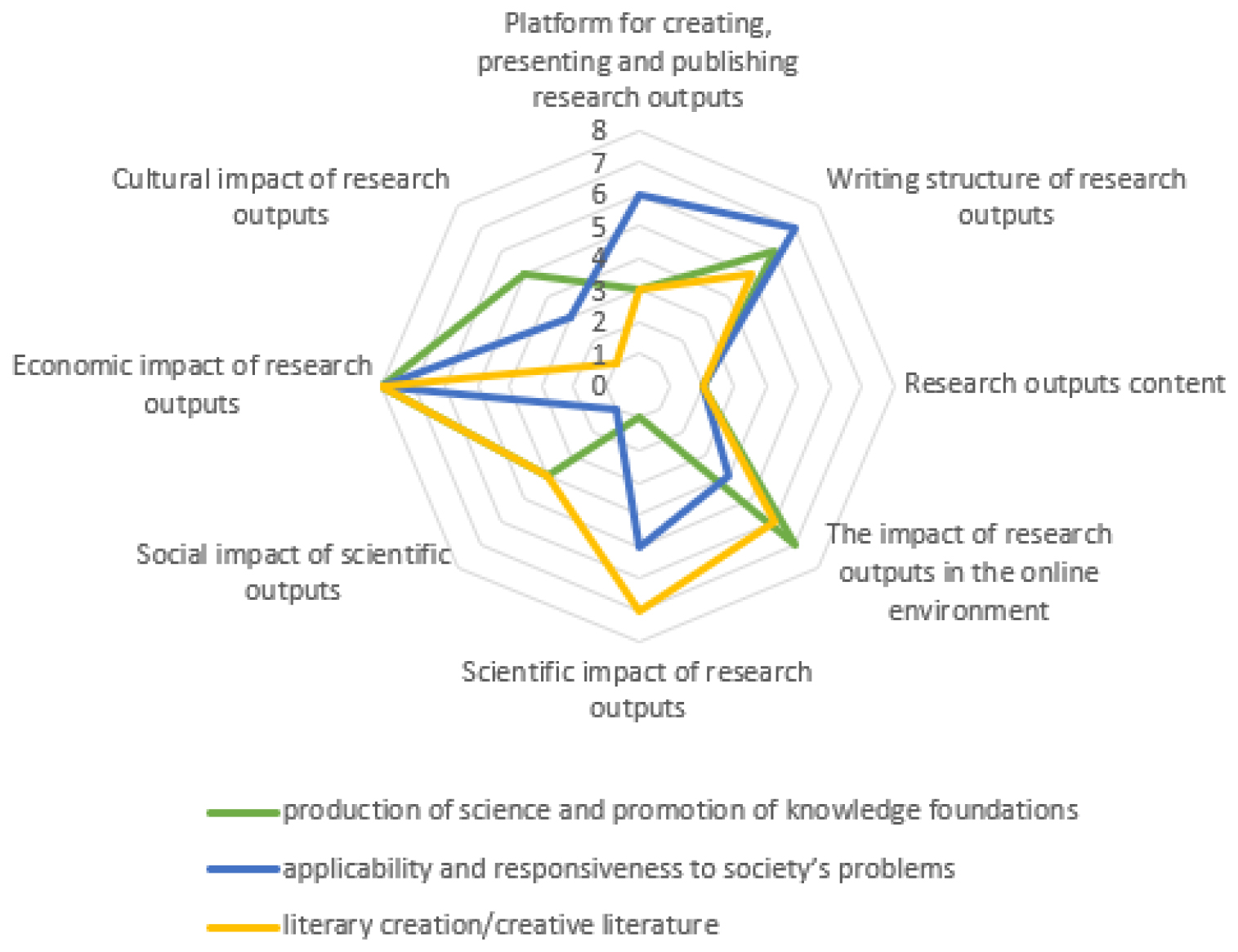
With regard to the specific nature and variety of the humanities fields and disciplines and the need to evaluate the humanities research outputs according to their nature and intrinsic characteristics, two questions has been posed and answered in this study as follows: “What are the criteria and indicators for evaluating the research outputs of humanities?” and “What is the prioritizing of the evaluation criteria according to the research approaches and goals in humanities?” Considering the differences in the fields of humanities, a case study of language and literature was conducted. This research was done with a mixed method (qualitative and quantitative stages). The first stage was carried out using a library research method to extract the criteria and indicators for the evaluation of the research outputs in the fields of language and literature. In the second stage, in order to finalize and prioritize the criteria, a questionnaire was designed and distributed among a number of experts in the fields of language and literature in two rounds of fuzzy Delphi. In the first stage, 42 indicators were identified and divided into 8 categories of criteria: 1) platform for creation, presentation and publication, 2) writing structure, 3) content, 4) impact in online environment, 5) scientific impact, 6) social impact, 7) economic impact, and 8) cultural impact. The prioritizing of the criteria was also based on their average obtained in the second round of fuzzy Delphi, which shows the impact of research approaches and goals on the priority of using the criteria.
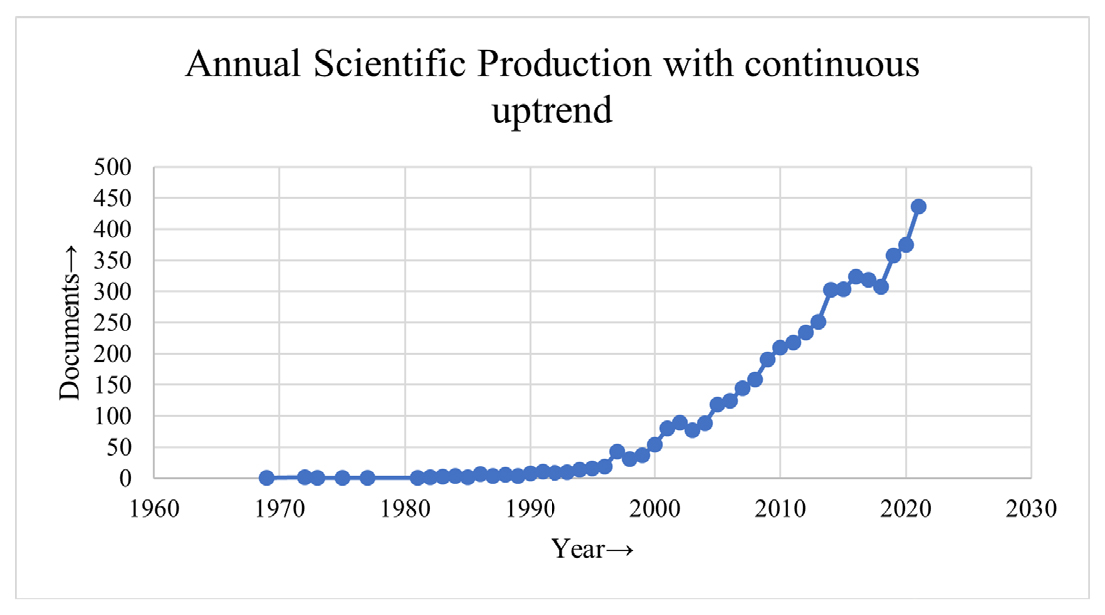
In this study, we conducted an in-depth analysis spanning 53 years, from 1969 to 2021, focusing on the field of literacy studies within the context of libraries. Our exploration involved a dataset of 4,986 articles retrieved from the Scopus database. Our primary objective was to visualize knowledge by identifying and exploring prominent trends and hotspots in literacy studies. To achieve this, we adopted a comprehensive approach. The methodology employed in this study combined traditional approaches with contemporary tools. The dataset was analyzed using the R software for conventional methodologies, while MATLAB was utilized for cutting-edge techniques. The multifaceted approach allowed us to uncover patterns of continuous growth, identify key contributors, and employ the Latent Dirichlet Allocation (LDA) model to recognize emerging and significant topics. The study revealed a consistent pattern of continuous growth in the field of literacy studies, indicating the acquisition of new knowledge over time. Key contributors, including productive authors, influential journals, and active countries, were identified. The application of the LDA model enabled us to recognize newly emerged, developed, and important topics. The significance of this research lies in its contribution to understanding the dynamic landscape of literacy studies within library contexts, offering valuable insights for future research and practical applications in the field.

This study aims to analyze India’s publications on organic chemistry and related fields at the micro, meso, and macro levels. The study attempts to map and visualize the publications in organic chemistry from 2016 to 2020 to identify the country co-authorship, author co-authorship, bibliographic coupling of authors, keyword co-occurrence, etc. Performance analysis techniques incorporating publication-related metrics, citation-related metrics, and citation and publication-related metrics (number of cited publications, citations per publication, h-index) were utilized to analyze the publications. Further, science mapping techniques are used to investigate citation analysis, bibliographic coupling, and co-authorship analysis. Moreover, enriched bibliometric techniques meant for computational evaluation like network analysis, including cluster analysis and visualization, were used in later phases using the software VOSviewer and Biblioshiny. VOSviewer, a bibliometric mapping tool, is extensively used in scientometric studies. For analysis of performance and visualization of research hotspots in Organic Chemistry, Biblioshiny web interface through R-studio is used, which is performing intensive data mining. A total of 1804 journals are encountered in the period taken for study which obeys a non-exponential growth with the highest number of papers (370) in the year 2017 and the least (344) in the year 2020 and as per the forecasting, the highest number of publications are expected in the year 2021 (349). Analysis of prolific authors reveals that A Kumar is the most productive author in the period with 47 publications and an h-index of 12 and KR Prabhu of IISc. Bangalore is the most impactful author with 387 citations and 27.64 CPP. Journal of Organic Chemistry is the most productive journal. Trending topics of research like azo dyes and metal-organic frameworks indicate the industrial and commercial importance of organic compounds. No similar studies have been found with matching objectives with this study.
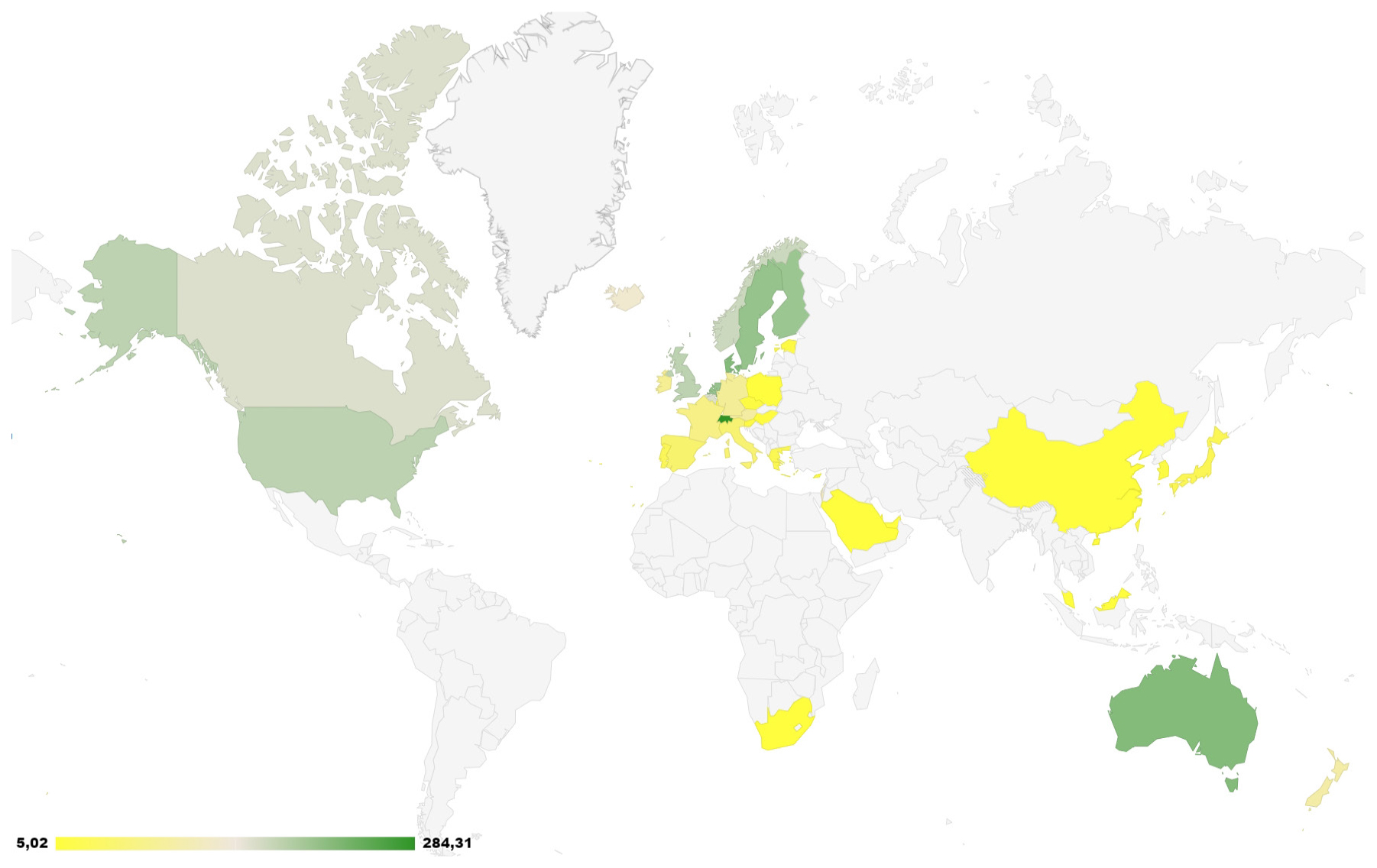
The scientific impact and rankings are considered important metrics for determining national recognition and prestige, as well as for determining scientific priorities and funding. This paper analyzes the distribution of leading scientists across all scientific fields and countries, examining the similarity graphs between them. Our analysis also reveals further regional and continental patterns. By measuring the correlation between top scientists with GPD data, we show that the ratio of scientists maintains a high correlation with the GDP per capita. We also study the link between the scientific performances of a country (in terms of top research personnel it hosts) with its economic wealth. Finally, we analyze the case of Greece and show that the scientific impact of a country changes significantly when we take into consideration its scientific personnel that has migrated abroad (i.e., brain-drain).
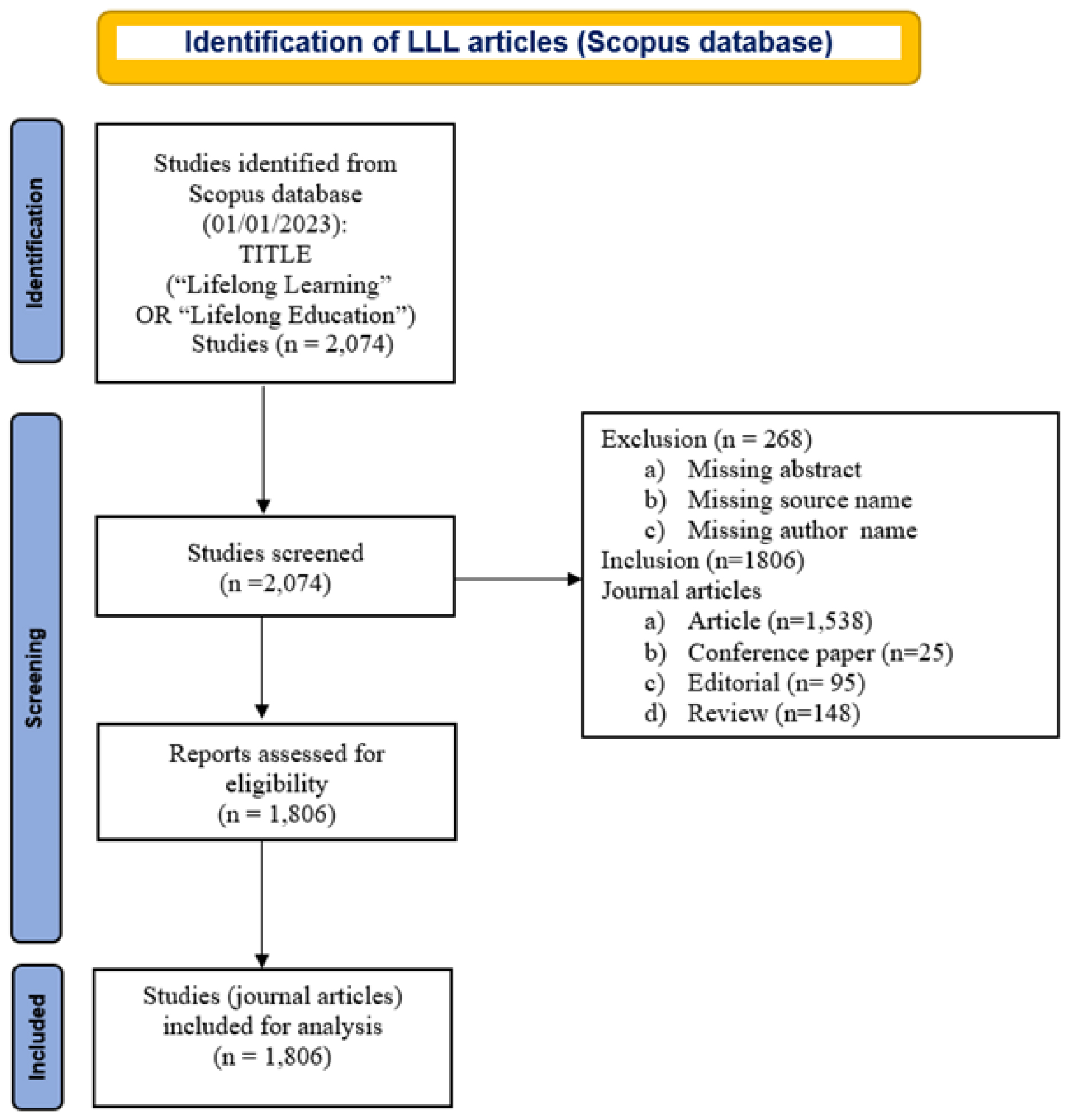
In the post-pandemic era, lifelong learning (LLL) emerged as the key to professional development and the core competency of all disciplines. Even globally, there is a dearth of evidence based bibliometric analysis, notably on LLL. This study addresses this gap by examining the data retrieved from the Elsevier Scopus database. A systematic search method was adopted to retrieve 1806 publications from 790 journals from 1963 to 2022. The R package, Biblioshiny, was used for data analysis, including productivity/performance analysis, citation analysis, and collaboration network analysis of social structure. The findings showed that the number of publications has significantly increased over time. A large number of studies were published in 2022. Overall, 85 countries contributed to LLL. Among them, the United States was the most productive with 787 publications, and the United Kingdom was the country with 4731 citations. Learning was the trending topic, and skill development was an emerging theme in LLL. The results will aid the stakeholders in identifying largely unexplored areas of research that need more attention and funding. This study outlines not only the current scientific developments but also the potential future of LLL research. This study will also be used as a resource for researchers and teachers in LLL. Future research directions in this area of knowledge are also outlined.
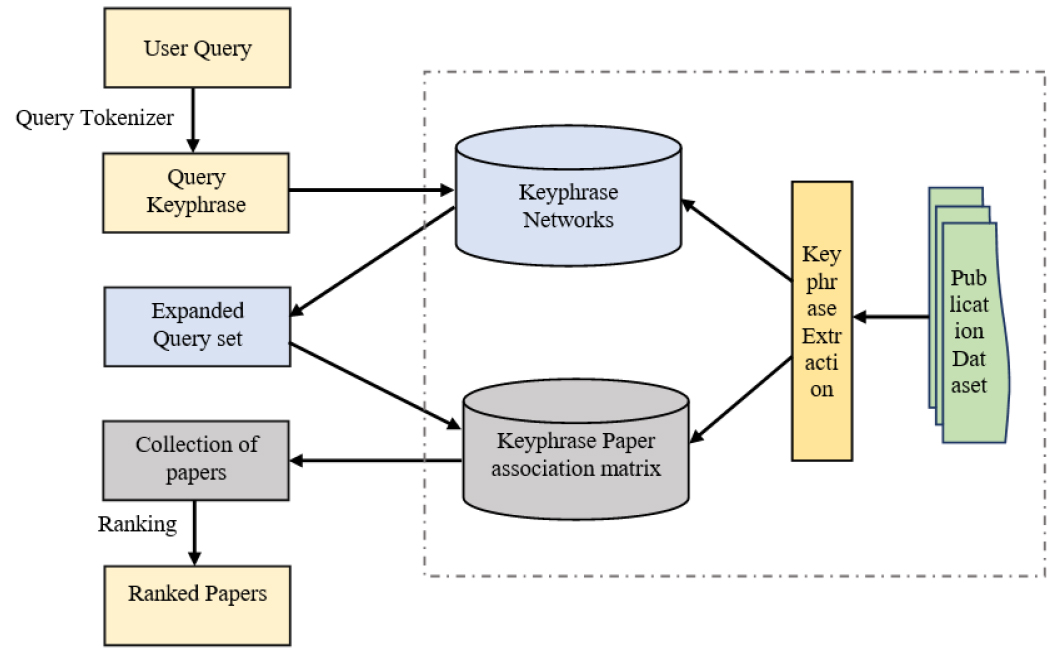
The literature recommendation system addresses the issue of time-consuming literature searches for researchers. A scholarly literature recommendation system recommends related papers to the user’s search query. Systems can improve the precision of user queries by generating relevant keywords. The proposed approach aimed to recommend research papers that align with the user’s interests by analyzing the query and returning a set of relevant papers. By pulling relevant keyphrases from the keyphrase networks, this was possible. A novel hybrid approach was introduced, which combined co-occurrence and co-citation networks based on their unique connections. This hybrid method improved performance by making the user’s query bigger and giving each keyphrase in the query set a certain amount of weight. The combination of co-citation and co-occurrence relations in the proposed method was able to capture co-occurring keyphrases with semantically similar keyphrases to the user’s query. The results showed that when the top 40 or 50 articles were chosen for the user’s query, the results were more relevant because the proposed method could capture more aspects of the user’s query than traditional single network-based methods.

The technological advancements and emergence of new kinds of communication mediums, especially social media and networks, have brought an era of unprecedented connectivity, which can be leveraged for better science communication. This paper explores social media activity around Indian research papers with the objective of evaluating if the quantum of activity is sufficient enough to indicate that social media can be an effective medium of science communication in India. In the absence of any existing survey of social media usage by scientists in India, the paper uses altmetrics as a proxy measure to capture; science communication activities around two major classes, namely, science-science connect and science-society connect. Results indicate that social media activity around Indian research papers is relatively low as compared to the developed countries and also the world average. There is a higher activity in science-science connect (Mendeley) whereas science-society connect is less pronounced (other social media and news). The paper argues that there is a need to expose Indian research community to the opportunities that social media presents and that an appropriate use can be helpful for improved science-science and science-society connects.
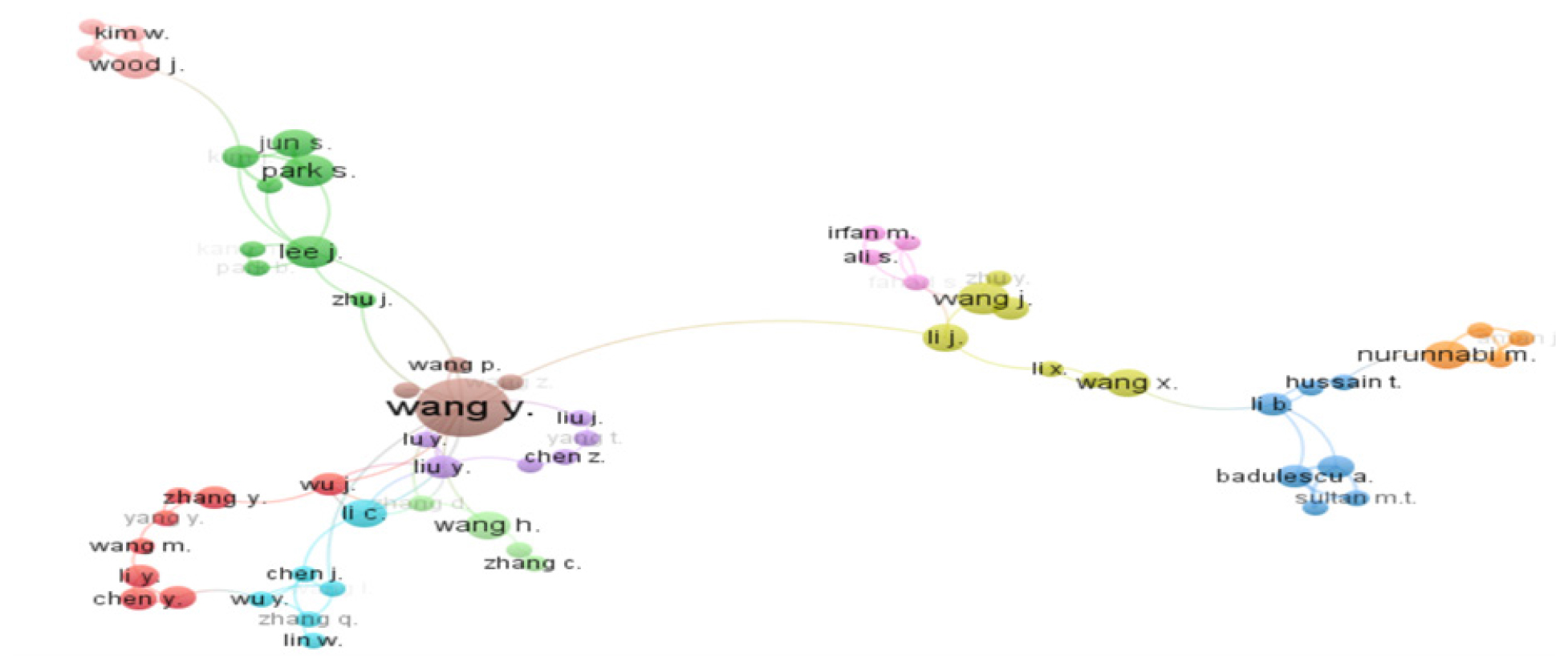
Mapping the Landscape of Sustainability in Social Media: A Bibliometric Analysis and Research Trends
Social media adoption has accelerated the generation and dissemination of content, allowing for the communication of important issues like sustainability and climate change. The current study seeks to explore the evolution of sustainability in social media research through network and bibliometric analysis. The bibliographic themes in the field have been studied using citation analysis, co-citation analysis, bibliographic coupling, keyword co-occurrence and content analysis using the VOSviewer software. The Scopus database has been used to survey the literature from 2001 to 2023. To ensure accuracy in the data obtained, 757 documents were finalized through numerous inclusion and exclusion criteria. Results suggest that sustainable development, marketing, perception, decision making and innovation were some of the most frequently studied topics in the area. The United States, China and the United Kingdom were the top contributing countries and Sustainability Switzerland, Journal Of Cleaner Production and Environmental Science and Pollution Research were some of the highly productive journals. Keywords such as big data, business development, economic and social effects, economic development and public attitude were less frequently studied, providing scope for future exploration. The study is one of the early attempts to research the development and evolution of sustainability in social media. It was found that the area is in its growth phase. As a result, it adds to the body of knowledge on social media and sustainability and opens new arenas for investigation.
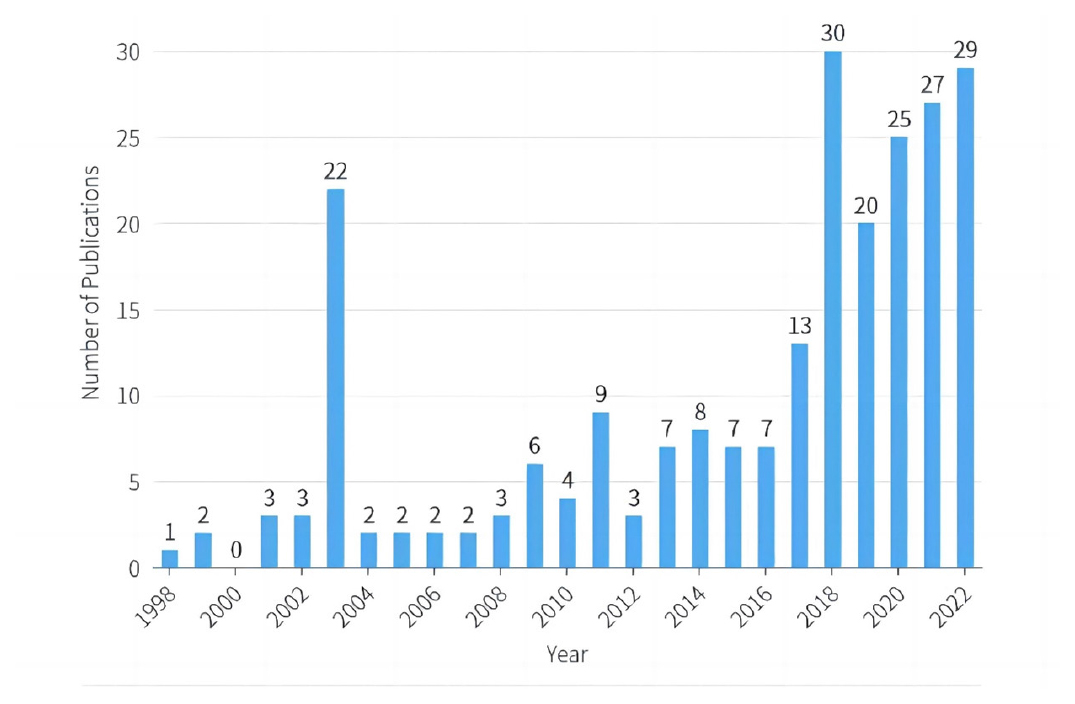
This article presents a bibliometric analysis of translation studies of children’s literature. The analysis focuses on annual publication trends, productive contributors at the country/region, institution, author, and journal levels, influential publications, and popular topics, language pairs, and research types and methods. For this purpose, a total of 237 articles were collected from the Web of Science Core Collection and imported into Microsoft Excel 2021 to calculate the aforementioned bibliometric indicators. In addition, VOSviewer was used to create a visual keyword co-occurrence map. The findings show that children’s literature translation has attracted more academic attention in recent years. Besides, institutions from countries/regions, such as Spain, China, England, South Africa, and Poland, are powerhouses of translation studies of children’s literature. Meanwhile, Haidee Kotze and Yolisa Madolo are among the most productive authors, and the articles by Christiane Nord and Emer O’Sullivan are among the most influential articles. Additionally, English-Chinese is the most popular language pair and English is the most popular language, children’s classics and translation strategies are among the most popular topics, empirical research far outnumbers theoretical research, and the observation method prevails over other research methods. Based on these findings, this article suggests several methods that might advance translation studies of children’s literature, such as proposing special issues on children’s literature translation, strengthening collaboration among scholars, convening regular seminars, and encouraging theoretical, quantitative, and interdisciplinary research.

There has been a significant increase in the number of studies on higher education over the years. Higher education research has changed in terms of quantity and quality over time. However, there is a lack of a holistic study on higher education research. The purpose of this research study is to examine the higher education literature holistically based on the top 15 journals addressing higher education, to examine the contribution to the field on the basis of a particular journal, institution and country, and to discover the patterns of the higher education literature. For this purpose, bibliometric analysis was carried out with 19685 publications obtained from the Web of Science covering the years 1956-2022. According to the findings of the study, higher education literature has shown a growth trend. This growth has accelerated significantly in the last two decades. The largest contribution to the literature was made by the “Journal of College Student Development”. In the higher education literature, the USA has pulled ahead of 120 countries demonstrated by a significant margin and has become the dominant of the higher education literature. The main themes of higher education literature are (1) assessment, (2) internationalization, (3) equity and social justice, (4) university, and (5) pedagogy/academic writing/curriculum. The countries with the most collaboration among 120 countries are USA, UK, and Australia, respectively. This study has provided a comprehensive perspective on the field by addressing the higher education research with long-term data. By revealing the structure of existing knowledge, it has prepared the ground for future research directions.
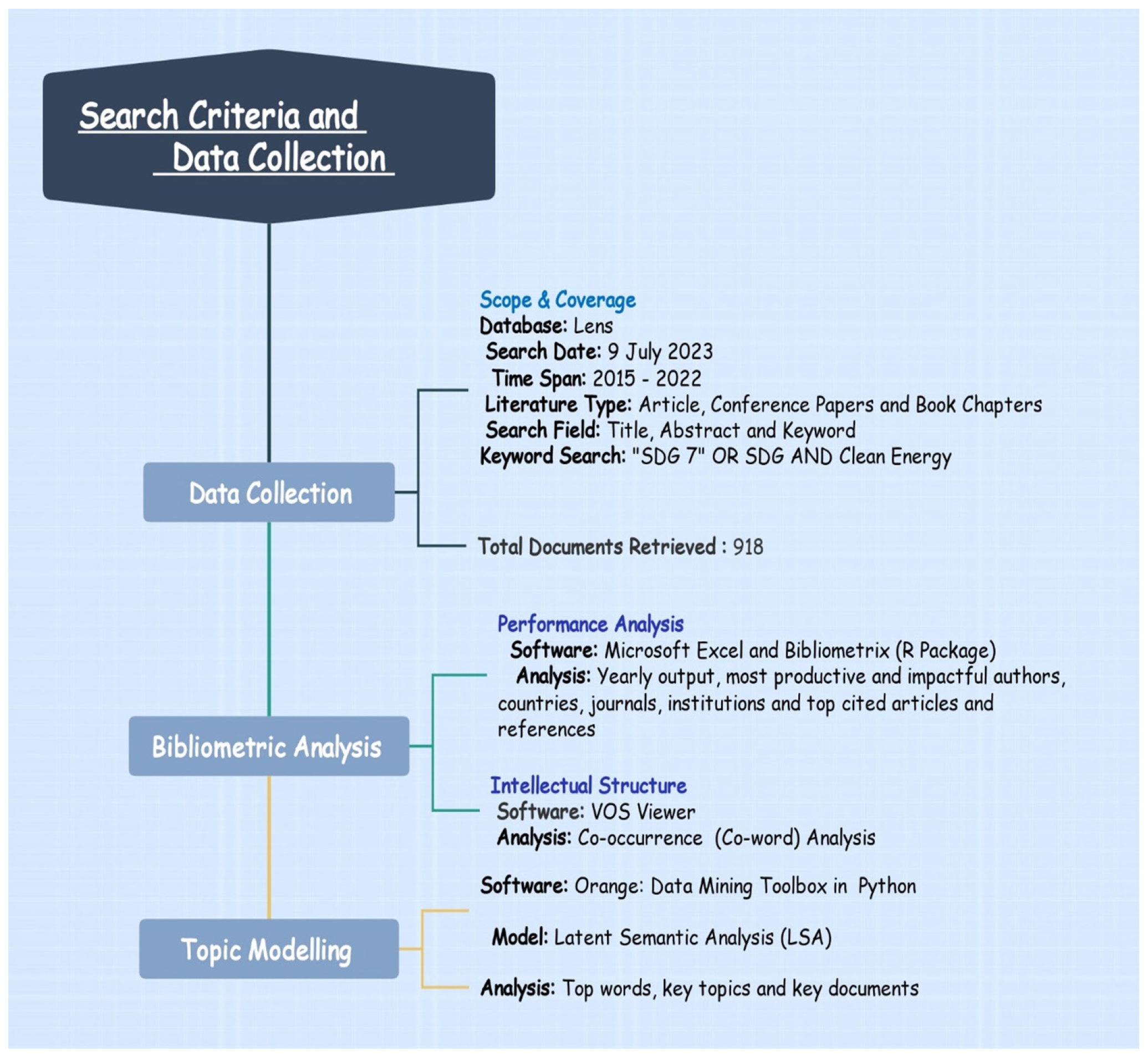
The Sustainable Development Goal 7 (SDG-7) promises to ensure the affordable and clean energy to the world. The United Nations (UN) has set a target for 2030, which can only be achieved through academic excellence. The present study aims to analyze the academic research support of SDG 7 from a global perspective by using bibliometric analysis and topic modelling approaches using Orange Python-based software. The present study extracts the scholarly publications from the lens database from 2015 to 2022 and the dataset consisted of 918 publications with 18,377 citations related to the SDG 7. These including 121 single-author and 797 multiple-authors publications. Most of the papers have been published in open-access journals. Environmental Science and Pollution Research International (5343 citations; 225 publications and CPP 23.74) was the most impactful journal, Muntasir Murshed (13 publications, 421 citations, CPP 32.3) was the most influential author, and China was the most productive country. Under co-occurrence analysis, Clean Energy, Environmental Economics, Health, Affordable Energy, Climate Change, and Business, six different denoted clusters were found, while in the topic modeling approach, six key topics were identified, in which three topics were related to economics and the other were energy-related and climate change. Environmental, renewable energy, and economics were the top words used in SDG 7, and six key documents on each topic were identified according to the distribution and weighting of the topics. The Implications of the research findings and addressing research gaps can inform researchers, policymakers, and funding agencies involved in advancing SDG 7 to help accelerate the achievement of the SDGs in the decision-making process.

This study aimed to unveil the intellectual structure and evaluate the relationship between personality traits and stress through bibliometric analysis. Through a systematic approach, a dataset including descriptions of personality traits and stress was downloaded from the Scopus database. Scientific bibliometric analyses, such as performance analysis, trend analysis, and science mapping, have been performed to extract the results. The findings revealed the intellectual structure (which includes a thematic map, recent trends, and thematic evolution) behind the relationship between stress and personality traits. This study aimed to provide a comprehensive review of the relationship between stress and personality traits, which professionals and researchers can use for further in-depth studies. This study also provides notes on recruiting the right candidates based on personality traits for recruiters after processing the scientific data. Since 1945, studies examining the relationship between personality traits and stress have been conducted, and this study is considered the first attempt to analyze the existing literature and provide a comprehensive guide on this relationship.
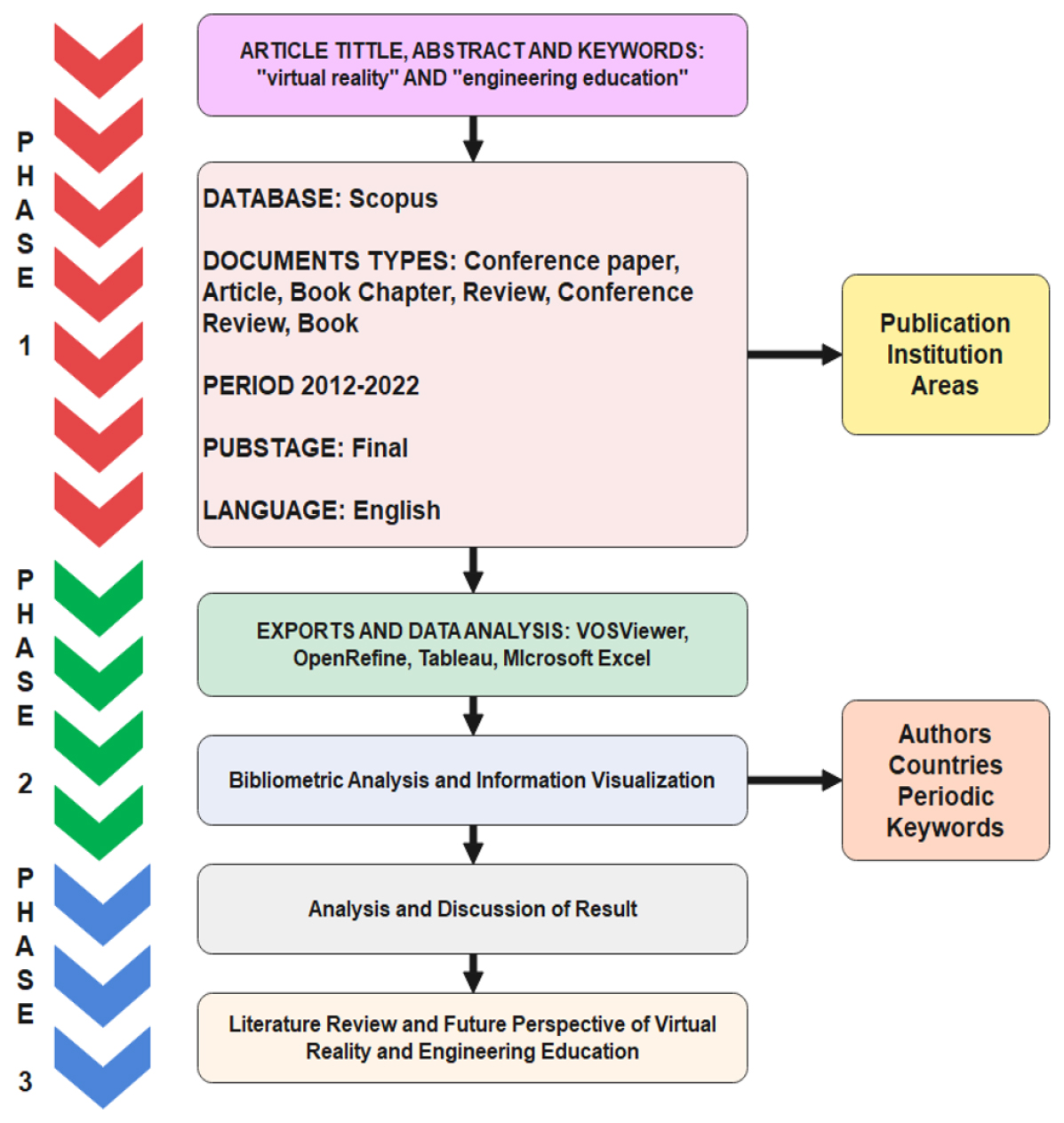
Recently, Virtual Reality (VR) has shown promise for changing Engineering Education (EE) to increase student learning results. However, VR-based education is not commonly used. This article examines VR technology’s growth and research possibilities in EE to understand its revolutionary impact on learning. Therefore, this study is essential so that researchers, educational institutions, and policymakers can make more informed and strategic decisions to support the development of engineering education based on VR technology. A thorough study of literature employing bibliometric methodology examines VR applications in EE. Scopus, which contained 1645 documents from 2012 to 2022, provided the analyzed papers on July 4, 2022. VOSViewer showed author networks, nations, journals, and keywords for bibliometric analysis. Over the past decade, VR and EE publications have risen. China produces the most VR/EE research, whereas Taiwanese authors are highly cited. Technologico de Monterrey is Mexico’s most active research institute for VR and EE, and computer and education journals are highly mentioned. VR’s research potential in EE emphasizes the need for further empirical investigations to determine its long-term effects on student academic performance, information retention, and learning outcomes. This essay contributes to the discussion on updating pedagogy and improving future engineers’ learning by making a persuasive case for VR in EE.
